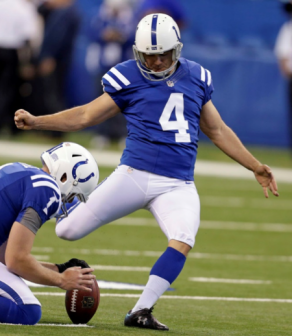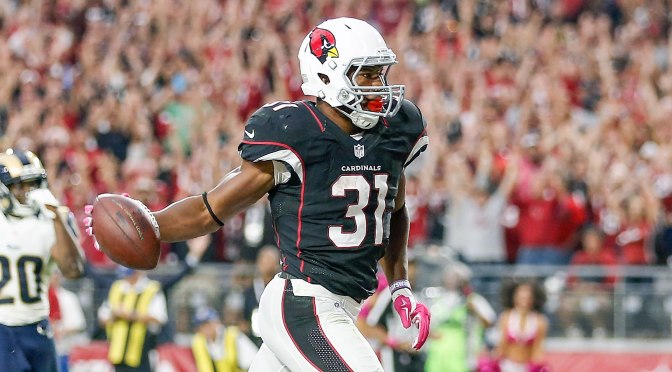The Jets are a sad franchise. All they have to show for their 51-year existence is one trip to the Super Bowl and thank god Joe Namath won it. This means that Sundays in my household very often consist of sitting around, watching our favorite team lose. I had to  find a way to make football interesting for me again, so I started playing fantasy football. Soon, fantasy football became a huge part of my life (maybe too big in my mom’s opinion), much like that of millions of Americans of all ages. I’ve played in a ten-team ESPN standard scoring league for years now and the draft has always been the weakest part of my game. My obsession with fantasy football meant that I read enough articles to do well with free agents, but I could never nail a good draft.
find a way to make football interesting for me again, so I started playing fantasy football. Soon, fantasy football became a huge part of my life (maybe too big in my mom’s opinion), much like that of millions of Americans of all ages. I’ve played in a ten-team ESPN standard scoring league for years now and the draft has always been the weakest part of my game. My obsession with fantasy football meant that I read enough articles to do well with free agents, but I could never nail a good draft.
Traditional draft strategy has long included taking running backs first, waiting on quarterbacks, really waiting on defenses and kickers, and finding receivers when you can get them at good value. I have taken a running back in the first round of every draft that I have ever been a part of, but last year marked my first year questioning this strategy. The top three ranked players for the draft that year were Antonio Brown, Julio Jones and Odell Beckham Jr., with DeAndre Hopkins following not too far back. The early talent at the wide receiver position produced questions for my first pick. By the time my pick came around, all four of these receivers were off of the board and I luckily ended up with RB David Johnson. I also took Lamar Miller next, meaning my first two picks were running backs, and with Melvin Gordon being scooped up by me in the sixth round. Half of my first six picks were running backs, which eventually translated into a league title for this lowly Jets fan. This solidified my opinion that the old strategy still worked, but I remained curious as to whether the secret was in the draft formula or if the people in my league were simply incompetent.
So, I decided to run the numbers, running linear regressions for total scores based off of each position’s score. Here is the output of the slopes and R–squared values for each position:
| Position | Slope | R-Squared |
| QB | 1.094 | .1656 |
| RB1 | 1.1886 | .231 |
| RB2 | 1.2828 | .1363 |
| WR1 | 1.4139 | .2232 |
| WR2 | 1.9002 | .2164 |
| TE | .7431 | .0452 |
| D/ST | .9873 | .0918 |
| K | 1.5052 | .1116 |
Now, none of the R-Squared values are very high, so they must be looked at relative to one another. In the case of this study, the R-squared values act basically as consistency scores for each position. What we see is that a team’s best running back will likely perform relatively consistently over the course of the whole season, but it is not a huge difference maker in terms of the team’s week-to-week performance as a whole. On the other hand, both receiver positions, especially the second receiver on the team, make a huge impact on the team’s final score and are almost just as consistent. This backs the new idea that having elite wide receivers will prove to be more beneficial than having elite running backs. This is where the owner’s managing style comes into play. I would personally rather have a running back who performs consistently and doesn’t completely determine the outcome of my week than have a less consistent wide receiver whose performance can make or break my team’s performance every week. With that being said, this means that an owner with a strength at running back would have to have a complete lineup, whereas the owner with a boost at receiver could likely get away with having more holes on the roster because of their star player’s ability to explode.
I then tried another test that basically confirmed that I was plain wrong. If we use the sum of the RB1 and RB2 scores and the sum of the WR1 and WR2 scores and use them to create a linear regression against the total scores, we can see that the sum of wide receiver’s scores have both a higher slope and an R-squared value than the sum of the running back’s scores. This essentially meant that wide receivers are both more consistent and have a bigger impact on one’s score than running backs, which solidifies the argument that elite wide receiver performances will help a team more than elite running back performances on a week to week basis.
One other concept that can be taken away from the study is that kickers, yes kickers, are very valuable. Yes, the position that we all leave to draft until the last round (except that one “stupid” guy every year who seemingly drafts a kicker way too early) is a vital part of any fantasy football team’s performance. I was shocked, but despite the general inconsistencies displayed by most kickers, the numbers are there to back it up. Adam Vinateri had a 23-point game last year, helping a lot of people win their matchup that week. In fact, the numbers say that kickers have a bigger impact on one’s overall performance than a quarterback does. However, they are wildly inconsistent and cannot be counted on from a week to week basis. The only conclusion that can be made from that is that if there is a kicker who you think will be extremely consistent and perform well, don’t hesitate to take him before the last round, but don’t take him too early either.
the last round (except that one “stupid” guy every year who seemingly drafts a kicker way too early) is a vital part of any fantasy football team’s performance. I was shocked, but despite the general inconsistencies displayed by most kickers, the numbers are there to back it up. Adam Vinateri had a 23-point game last year, helping a lot of people win their matchup that week. In fact, the numbers say that kickers have a bigger impact on one’s overall performance than a quarterback does. However, they are wildly inconsistent and cannot be counted on from a week to week basis. The only conclusion that can be made from that is that if there is a kicker who you think will be extremely consistent and perform well, don’t hesitate to take him before the last round, but don’t take him too early either.
I still wasn’t completely sold on the idea that wide receivers were more valuable that running backs, so I went to check what works better at the FLEX position (no, it is not tight ends). Admittedly, running backs are at a natural disadvantage given that there are only 32 of them who start on any given week, and many are part of a running back-by-committee situation. The statistics back up this idea as the FLEX receiver has a slope of 2 and the FLEX running back has a slope of 1.23, with both of them having low R-Squared values (although the receiver is higher in that case again).
All in all, wide receiver depth is more valuable than running back depth, despite the common misconception that loading up on running backs is the route to victory. However running backs are far more consistent, which is also important to take into account when thinking about one’s fantasy football strategy. Also, building a team around an elite running back requires a complete roster full of many elite players, whereas having a receiver as your best player means that they alone can carry you to some victories. It works like three-pointers in the NBA; they might be harder to make, like an elite receiver performance, but are a more efficient shot due to how many more points they provide if they are hit at a certain rate. With that being said, I think that the reason I was able to win my league was because I had three running backs who qualified as RB1-level players, providing me with a full roster that performed consistently, effectively finding the exception to the general premise. It is up to the owner to choose which strategy to employ, but I don’t think I will be changing mine.



This is the best article (about anything) I’ve ever read in my life. The author clearly knows his stuff. I look forward to employing this amazing advice and taking my league by storm this upcoming season.
LikeLike
This is the best article (on any subject) I’ve ever read. The author is clearly super smart and funny. I look forward to employing his advice and taking my fantasy football league by storm this upcoming season.
LikeLike